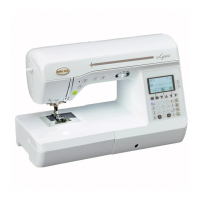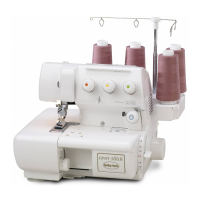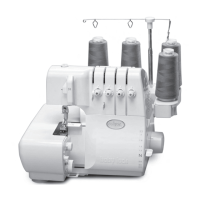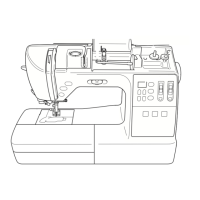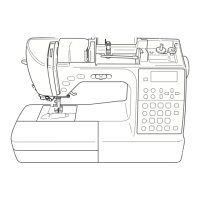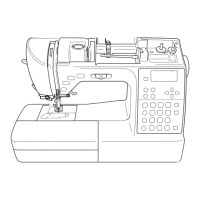
Do you have a question about the Baby Lock Solaris VISION BLSA3 and is the answer not in the manual?
| Brand | Baby Lock |
|---|---|
| Model | Solaris Vision BLSA3 |
| Display | Yes |
| USB Connectivity | Yes |
| Automatic Thread Cutter | Yes |
| Category | Sewing Machine |
| Type | Sewing and Embroidery Machine |
| LCD Screen | Yes |
| Threading System | Automatic |
| Needle Threading | Automatic |
| USB Port | Yes |
| Lighting | Yes |
| Maximum Stitch Length | 5 mm |
| Maximum Stitch Width | 7 mm |
| Bobbin Type | Top-Loading |
Initial steps to prepare the machine for embroidery.
Procedure for attaching and removing the presser foot.
Steps for replacing the sewing machine needle.
Instructions for connecting the embroidery unit to the machine.
Detailed steps for winding and setting the bobbin.
Instructions for threading the upper thread.
Guidance on hooping fabric and attaching stabilizers.
How to attach and remove the embroidery frame.
Explanation of the keys used for pattern editing.
How to choose and select embroidery patterns.
Methods to check and align pattern placement on fabric.
Steps for embroidering patterns and achieving attractive finishes.
Procedures for handling issues during embroidery.
Using the app to monitor machine status remotely.
Introduction to basic pattern editing functions.
How to view a pattern before embroidering.
Adjusting the position of a pattern on the screen.
Changing the orientation of a selected pattern.
Resizing patterns while maintaining quality.
Adjusting stitch density for patterns.
Creating patterns that repeat across a design.
Creating copies of a selected pattern.
Specifying areas not to be embroidered.
Special functions for embroidery like monochrome stitching.
Adding temporary stitches to secure fabric.
Fine-tuning upper and bobbin thread tension.
Enabling automatic thread cutting after each color.
Precisely aligning the pattern with the needle position.
Saving and retrieving embroidery patterns.
Special techniques like appliqué and couching.
Steps to create appliqué designs.
Creating continuous quilting patterns across fabric.
Combining multiple pattern sections into one design.
Using the camera to accurately connect pattern sections.
Recovering from interruptions during pattern connection.
Introduction to the IQ Designer function.
The main interface for creating and editing designs.
Detailed explanation of tools available in pattern drawing.
Customizing line appearance.
Customizing fill properties.
Adding pre-defined shapes to designs.
Removing parts of a design.
Selecting design elements for editing.
Adjusting the dimensions of selected elements.
Screen for adjusting stitch properties for lines and regions.
Customizing stitch parameters for specific elements.
Creating patterns from scanned images.
Using the camera to scan and trace images.
Converting line drawings into embroidery patterns.
Converting illustrations into embroidery patterns.
Adding stippling or decorative fill effects.
Adding decorative stitching around existing patterns.
Using a smart device app for pattern positioning.
Solutions for common machine problems.
Specific troubleshooting for bobbin winding issues.
Categorized list of common problems and solutions.
Troubleshooting for initial setup issues.
Troubleshooting during the embroidery process.
Troubleshooting after the embroidery is completed.
Explanation and solutions for machine error codes.


